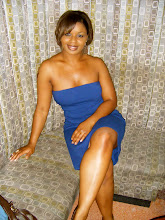By Joan Morgan
The 1970’s was an age when Black was already beautiful. In the wake of the Black Power and Civil Rights movements, Black Nationalism and feminism, the reigning do of my day was the Afro. It was a defiant rejection of White beauty standards, an aesthetic demand to feel good in the skin we’re in. Is it any wonder, then, that we also called it the natural?

-pic from Essence Magazine
By Ondrea Barbe
While the politics of this style statement may have eluded me, I was old enough to intuit the sexiness of the thing. This was the ultimate expression of both Black style and cool, and it seemed logical that any description of a fine-ass Black boy back in the day would begin with “He got an Afro.” Of course he’d sooner offer you the gift of full lips and a kiss than allow you to touch his perfectly coiffed halo.
For me, a young girl growing up in the South Bronx, the ’fro was also the ultimate expression of womanist power and sex appeal. In my 10-year-old mind, Pam Grier’s Foxy Brown ’fro was far more powerful than her gun, its manicured perfection the true key to her superpowers.
Today, almost four decades since its emergence in American culture, the Afro is very much a survivor, taking up residency everywhere from hip-hop’s urban lairs to Parisian runways. Much more than a nostalgic nod to Black style of yesteryear, the Afro remains stylistically potent because politically it is still born of need. It simultaneously says, “We’ve come a long way, baby,” and “We still have a ways to go.” So the choice to go natural—be it Afros, dreadlocks, Nubian knots, twists, cornrows or braids—still serves as a big thank-you kiss.

No comments:
Post a Comment